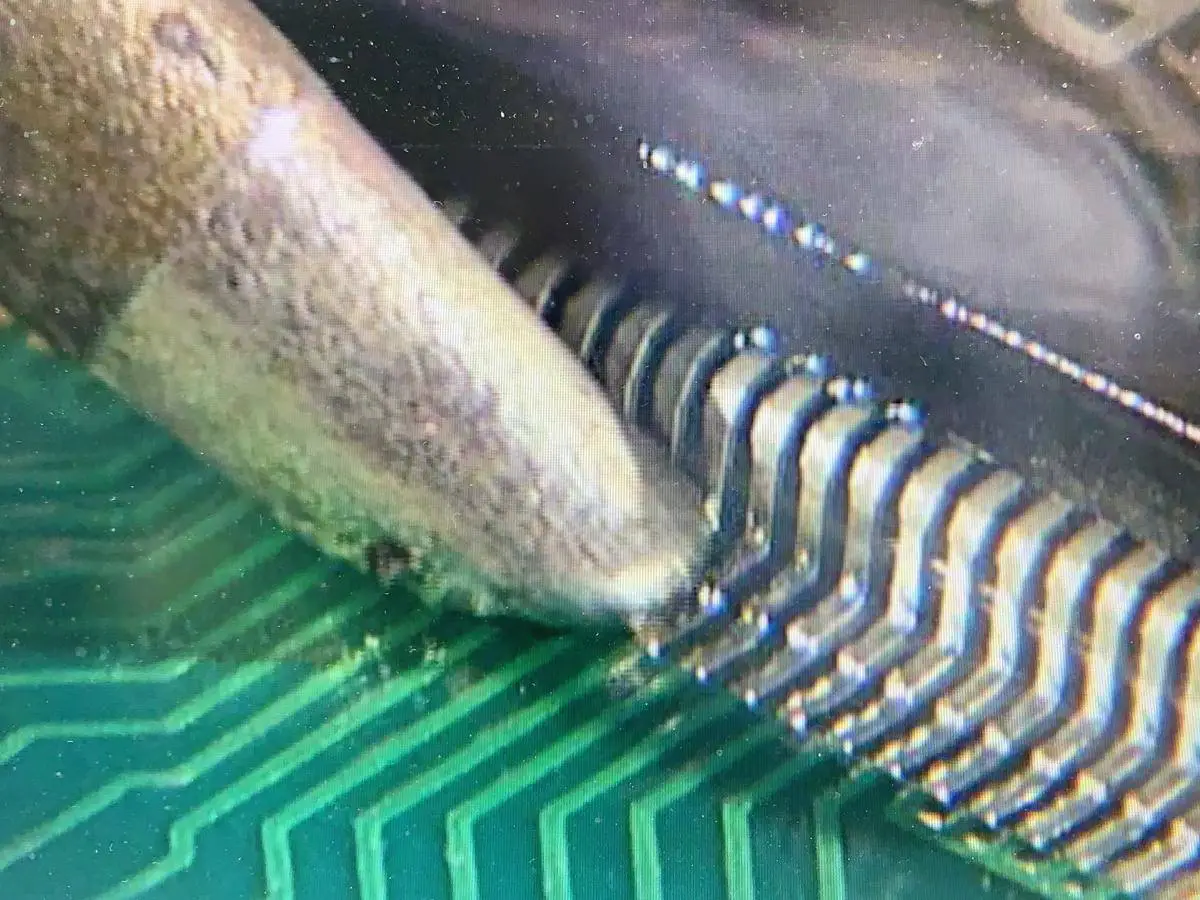Drag soldering is soldering with a hollow soldering tip (mini wave tip) or with a flattened tip (hoof tip), a drag soldering tip. Due to the surface tension (adhesion), a drop of tin (bead) remains in the cavity. You drag this drop of tin with your hand soldering iron over the component leads so that an equal amount of tin flows under each lead. This technique is explained in detail in the IPC-7711/7721 standard. If you master this technique, you can quickly and easily solder difficult fine-pitch SMDs.
You start by fixing the component diagonally (fix 2 leads). Then you use a flux-pen/-dispenser to flux the entire row of leads, without flux you’ll create shorts. And finally you go with a pre-tinned drag solder tip over the entire row. Make sure you don’t start on the lead what you have secured, otherwise the component will shift! And if you are at the end of the row to get over the last lead otherwise there will be a drop (short circuit) between the last 2 leads. If a short circuit occurs, you can easily drag it away with a clean (empty) tip (just like an ice cream scoop), this is also described in the IPC-7711/7721. If this does not function, use desoldering braid (wicking braid). When you have finished the dragging operation, clean the solder joints and the circuit board with a flux cleaner (e.g. isopropanol). The IPC-7711/7721 standard is a nice manual containing many useful tips & tricks for soldering, desoldering and also repairing.






